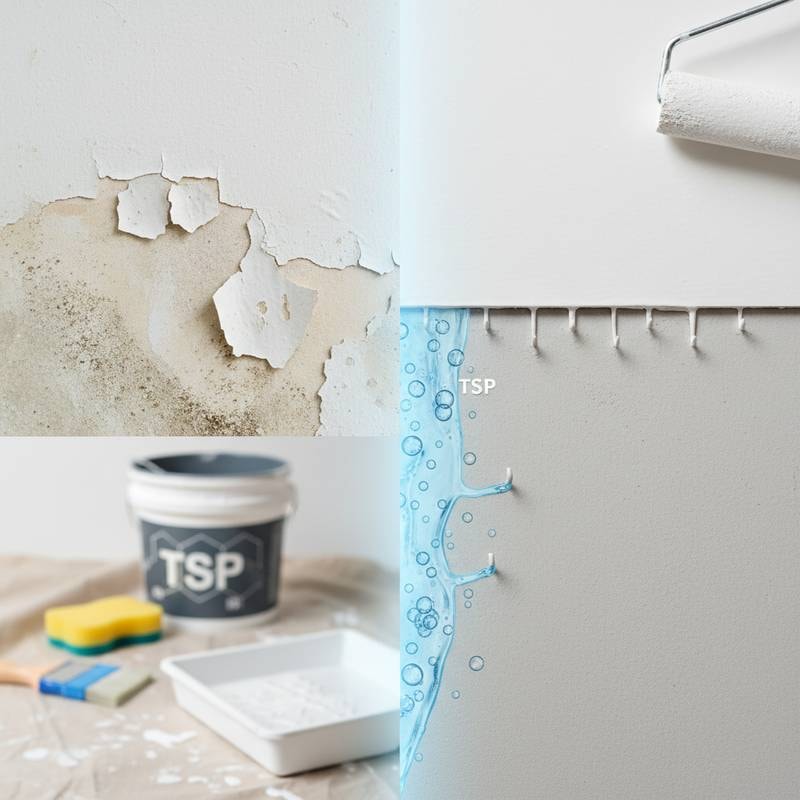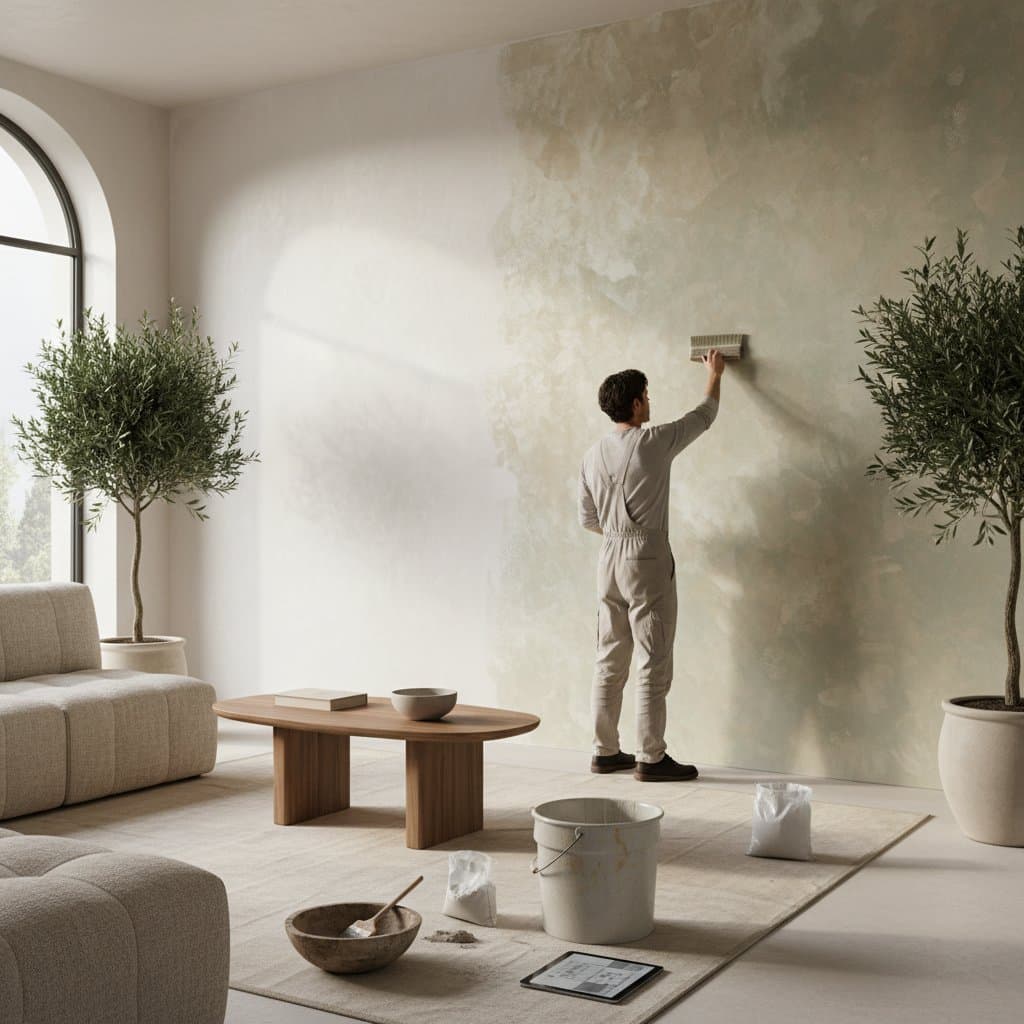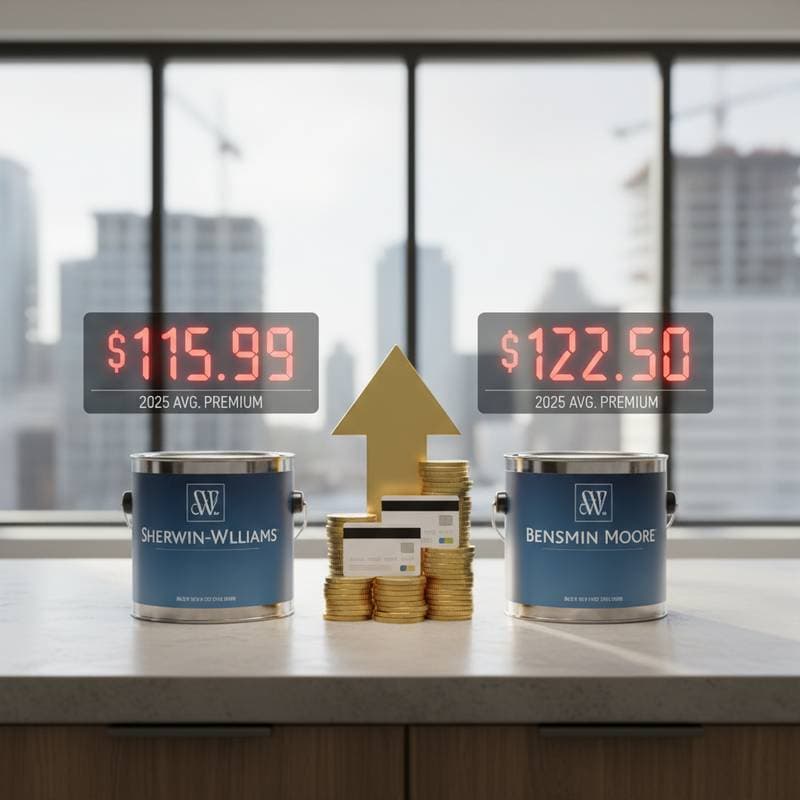Understanding Paint Failure from Skipped TSP Cleaning
Painting transforms a space, yet failures like peeling or bubbling diminish that renewal. Homeowners frequently overlook surface cleaning with trisodium phosphate (TSP), a critical preparation step. This oversight allows contaminants to undermine paint adhesion, resulting in short-lived finishes.
This article examines the importance of TSP cleaning, its role in adhesion, associated costs, and strategies to prevent repainting expenses.
The Role of TSP Cleaning in Surface Preparation
Surfaces accumulate grease, oils, dust, and residues over time. Kitchens trap cooking fumes, bathrooms build soap films, and walls collect fingerprints. These invisible layers block paint from bonding, even on surfaces that appear clean.
TSP effectively dissolves tough grime, creating a neutral base for primer and paint. Without it, applications yield uneven coverage, streaks, and early deterioration. Proper preparation transforms potential defects into durable results.
Science of Paint Adhesion and TSP's Impact
Adhesion relies on surface tension and mechanical interlocking. Clean, matte, and dry substrates enable paint to form secure bonds. Oils or residues create barriers that weaken this connection.
TSP neutralizes contaminants and subtly etches glossy areas, enhancing grip. Omission leaves paint vulnerable to moisture, thermal shifts, and wear, accelerating failure. Such neglect can reduce a job's lifespan by years, turning a worthwhile investment into frequent maintenance.
Detailed Cost Analysis for Preparation
Standard Cost Ranges
- Basic TSP cleaning: $0.25 to $0.50 per square foot
- Comprehensive prep with TSP, sanding, and priming: $1.00 to $1.75 per square foot
- Advanced services including repairs and specialty primers: $2.00 to $3.50 per square foot
Core Components
- Application of TSP solution or eco-friendly alternative
- Thorough rinsing and extended drying
- Patching small imperfections like cracks or holes
- Sanding to eliminate gloss and smooth textures
- Inspection to confirm surface readiness
Additional Expenses
- Intensive degreasing for kitchens or workshops
- Remediation of mold in humid zones
- Safe handling of lead-based paints
- Extensive drywall or plaster restoration
- Custom primers for challenging substrates
Influencing Variables
| Factor | Impact on Cost | Specific Examples |
|---|---|---|
| Area and elevation | Elevates labor | Tall ceilings or expansive walls |
| Existing paint state | Moderate to significant | Flaking, powdery, or high-gloss layers |
| Material type | Fluctuates | Wood panels, metal frames, drywall, or brick |
| Access challenges | Boosts equipment needs | Confined rooms or elevated exteriors |
| Grime severity | Extends time | High-traffic zones like kitchens or former smoking rooms |
Consequences of Omitting TSP Cleaning
Initial time savings from skipping TSP often yield substantial setbacks. Common problems emerge as follows:
- Paint peels or flakes shortly after drying
- Textures appear irregular due to embedded particles
- Underlying stains seep through fresh layers
- Adhesion falters at edges and moldings
- Overall durability diminishes for primers and topcoats
These issues prompt homeowners to blame materials or application, overlooking preparation as the root cause.
Comparing DIY and Professional Methods
DIY Techniques
Apply TSP using a soft sponge or rag, starting low to avoid drips. Scrub methodically, then rinse multiple times with fresh water. Allow full drying, which may take 24 hours, before proceeding.
Costs remain minimal, around $30 for supplies including gloves and ventilation aids. Challenges include handling the caustic solution safely and achieving uniform cleanliness on broad or intricate areas.
Professional Execution
Experts employ TSP or compliant substitutes at optimal concentrations. Their workflow encompasses assessment, protection of surroundings, cleaning, abrasion, and priming for efficiency.
Upfront investment proves economical by minimizing rework. Reputable firms condition warranties on complete preparation, ensuring accountability.
Project Timeline with TSP Preparation
TSP integration typically extends a home painting by one day. Follow this sequence:
- Inspect and protect: Drape floors and furnishings.
- Prepare solution: Dilute per guidelines.
- Clean and rinse: Scrub surfaces, followed by two water passes.
- Dry thoroughly: Wait until no moisture lingers.
- Verify readiness: Check for residues before coating.
Adhering to this prevents adhesion failures, regardless of paint quality.
Selecting Between Handyman and Specialist
Handymen suit minor tasks like interior closets or small repairs. For extensive interiors, exteriors, or layered paints, engage certified painters equipped for chemical management and safety.
Inquire about preparation inclusion during bidding. Quotes excluding cleaning may underdeliver, incurring future expenses from subpar outcomes.
Homeowner Preparation Strategies
Support the process by:
- Removing decorations, outlets, and hardware from walls.
- Dusting lightly to aid initial cleaning.
- Confirming product suitability for your materials with the team.
- Scheduling sufficient drying intervals.
- Securing a contract outlining all prep details.
These actions highlight the value of meticulous cleaning.
Enduring Advantages of Thorough Preparation
TSP cleaning yields uniform adhesion, vibrant hues, and resistance to elements. Surfaces stay simpler to maintain, and future updates demand less effort. Long-term savings arise from extended job longevity.
Neglect fosters repeated interventions, material waste, and dissatisfaction. One preparation day averts years of upkeep concerns.
Strategies for Lasting Paint Success
Prioritize TSP or equivalents in every project to secure professional-grade results. Consult experts for tailored advice, ensuring your investment endures.
Frequently Asked Questions
Why Does Skipping TSP Lead to Peeling?
Clean surfaces enable molecular bonding. Residual contaminants prevent this, allowing environmental factors to dislodge paint rapidly.
How Much Time Does TSP Add?
Expect one additional day for washing, rinsing, and drying in average homes. Patience here safeguards against early defects.
Are TSP Alternatives Viable?
Phosphate-free options match efficacy while complying with regulations. Dilute and rinse as directed for optimal performance.
Handyman or Contractor for Prep?
Handymen manage basics; contractors excel in scale and complexity, often tying prep to guarantees.
Which Areas Need TSP Most?
Oily zones like kitchens, humid bathrooms, trim, and polluted exteriors gain the greatest protection.
Options After Painting Without TSP?
Monitor for bubbles or lifts. Sand and spot-prime lightly if isolated; full removal and redo for extensive issues.



